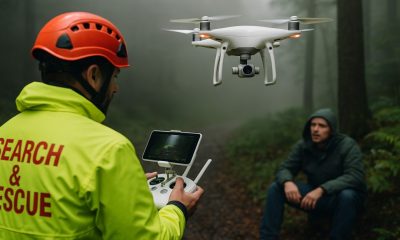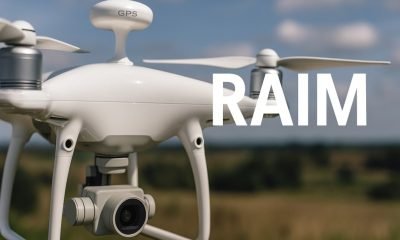- Acronym Guide
- AAM
- ABS
- AC
- ACAS
- ADS-B
- AFAC
- AGL
- AI
- AIM
- ALS
- AM
- AMA
- ANSP
- APPI
- AUV
- AUVSI
- ARPAS-UK
- ASTM
- ATC
- BVLOS
- CAA
- CAAC
- CAB
- CASA
- CATT
- CBO
- CBR
- CBRN
- CDMA
- CDR
- CFR
- COA
- COMINT
- CORS
- COTP
- COTR
- CPTED
- CV
- C2
- DAA
- DEM
- DFI
- DFS
- DGCA
- DHS
- DOD
- DPA
- DPEs
- DRO
- DSM
- DSMX
- DSP
- DSSS
- DTM
- EASA
- EFT
- EO
- EOD
- EO/IR
- ELINT
- EMI
- ESC
- EVLOS
- eVTOLs
- FAA
- FCC
- FCS
- FHSS
- FICCI
- FLIR
- FOB
- FOV
- FPS
- FPV
- GBDAA
- GCP
- GCS
- GDPR
- GNSS
- GPS
- GSD
- GVC
- HDR
- HOGE
- IACRA
- ICAO
- ICS
- IMU
- INS
- IR
- ISA
- ISR
- ITU
- LAAMS
- LAANC
- LAATM
- LAI
- LBA
- LIDAR
- LOS
- LSALT
- MAC
- MAVLink
- MLIT
- MMS
- MSL
- MTOM
- NDAA
- NCSL
- NFZ
- NIST
- NMEA
- NOTAM
- NPA
- NPRM
- NTIA
- OEM
- OFDM
- OOP
- PASM
- PAV
- PCV
- PdM
- PEC
- PIC
- PID
- PIPL
- PLD
- PM
- PN
- PPK
- PPS
- PSM
- PWM
- UAM
- UAOP
- UAS
- UASTM
- UAV
- UCAVs
- UHD
- UHF
- USV
- UTM
- RAIM
- RCC
- RCS
- RFI
- ReOC
- RePL
- RMS
- ROI
- RPAS
- RPC
- RTH
- RTK
- SaR
- SAR
- SARP
- SBAS
- S.Bus
- SEDENA
- SfM
- SFOC
- SIGINT
- SLAM
- SMS
- SORA
- STTR
- sUAS
- TCAS
- TCCA
- TFR
- TIN
- TOF
- TP
- TPS
- TSA
- VHF
- VLOS
- VTOL
Drone Acronyms
What is STTR (Small Business Technology Transfer)?
Published
2 days agoon
By
Jacob StonerTable Of Contents

Definition
The Small Business Technology Transfer (STTR) program is a U.S. government initiative. It promotes collaboration between small businesses and nonprofit research institutions. The program helps turn scientific research into real-world applications, especially in aerospace, defense, and drone technology.
Usage
In the drone industry, Small Business Technology Transfer funding supports small businesses that work with universities or research labs. These partnerships often lead to the development of drones that meet federal regulations. For example, a startup might use STTR funding to build an AI-based navigation system with help from an academic lab, targeting FAA certification.
Relevance to the Industry
Small Business Technology Transfer plays a key role in pushing drone innovation forward. It enables startups to access academic expertise while staying focused on building viable, regulation-ready solutions. This is especially important for technologies involving Remote ID, autonomous flight, and BVLOS operations. Through STTR, small UAV companies can lower development risks and improve their chances of market success.
How Does an STTR (Small Business Technology Transfer) Work?
Eligibility and Partnership: A small business partners with a U.S. research institution such as a university or federal lab. The business must lead the project.
Proposal Submission: Together, they create a proposal responding to a government agency’s STTR topic. This includes technical goals, commercial plans, and how the solution meets regulatory standards.
Phase I – Feasibility Study: If selected, the team receives Phase I funding (usually around $150,000). This phase focuses on proving the project’s technical viability.
Phase II – Development: If Phase I succeeds, the team can apply for Phase II funding—often over $1 million. This stage advances the prototype for field testing.
Commercialization: Once development is complete, the small business prepares the drone technology for market launch. Most often, this includes ensuring FAA compliance or targeting government contracts.
Example in Use
“Our company received STTR funding to develop a collision-avoidance system for UAVs. We partnered with a university lab. Now, the prototype is undergoing FAA testing for BVLOS certification.”
Frequently Asked Questions About STTR (Small Business Technology Transfer)
What makes STTR different from SBIR?
STTR requires collaboration with a research institution. SBIR (Small Business Innovation Research) allows small businesses to apply on their own.
How can STTR benefit drone startups?
It provides funding for early-stage research while giving startups access to academic expertise. This helps them build advanced drone technologies that meet strict regulatory standards.
Which agencies offer STTR funding for UAVs?
Agencies like the Department of Defense (DoD), NASA, and the Department of Energy (DOE) regularly fund UAV projects through the STTR program.
For examples of these acronyms visit our Industries page.
As the CEO of Flyeye.io, Jacob Stoner spearheads the company's operations with his extensive expertise in the drone industry. He is a licensed commercial drone operator in Canada, where he frequently conducts drone inspections. Jacob is a highly respected figure within his local drone community, where he indulges his passion for videography during his leisure time. Above all, Jacob's keen interest lies in the potential societal impact of drone technology advancements.
Pros
Cons
You may like


Whats is SaR (Search and Rescue) & How Does it Work


What is NPRM (Notice of Proposed Rulemaking)?


What is TP (Transport Canada Publication)?


What is RAIM (Receiver Autonomous Integrity Monitoring)?


What is TCCA (Transport Canada Civil Aviation)?


What is UHF (Ultra High Frequency) & How Does it Work?